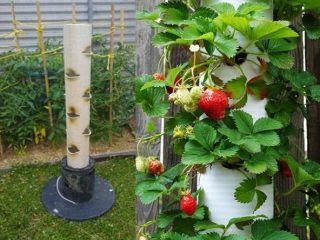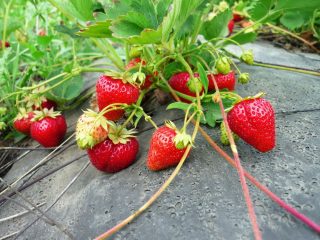Content
Amateur gardeners and agricultural producers involved in growing strawberries on a production scale are often faced with the choice of which variety of crop to use. The fact is that the variety of strawberries can baffle even the most experienced gardeners.
We will try to tell you more about one of the varieties created by American breeders. Monterey strawberries have conquered more than one gardener and are deservedly popular. In order not to make a mistake when choosing a variety, you need to know its botanical characteristics, rules of care and cultivation.
Video about Monterey strawberries in the country:
Botanical properties
Remontant strawberry Monterey was obtained in California by university scientists by crossing the variety Albion and further selective selection (cal. 97.85-6).
- The variety is mid-early and belongs to day-neutral plants.
- The bushes are powerful, with a large number of peduncles, with bright green shiny leaves. The leaves are medium wavy and quite large. Therefore, it is not recommended to plant Monterey strawberry seedlings close together: denseness reduces the yield.
- It begins to bloom in early May until frost. The flowers are white, large, with a bright yellow center.
- The berries are dark red, glossy, large, weighing up to 30 grams. The fruits are conical in shape with a pointed tip.
- The fruits are dense, the skin is not damaged if you run your finger over it.
- Remontant strawberries are resistant to many strawberry diseases. Powdery mildew brings trouble.
Unlike other varieties of remontant strawberries, they yield well in winter, even in a city apartment.
Productivity of the variety
The yield of Monterey strawberries, according to the description of the variety, photos and reviews from gardeners, is excellent. Remontant garden strawberries bear fruit in waves, 3-4 times per season. One plant produces up to 14 flower stalks. From one bush you can collect 500 grams of sweet, without sour, berries. Subject to all agricultural technology standards, even up to 2 kg. Productivity may decrease if temperatures are too high: the berries ripen without gaining weight.
Dense berries do not lose their presentation: they do not wrinkle during transportation, and do not change their taste or shape when frozen.
Reproduction methods
How to choose female sockets:
The Monterey strawberry variety begins to bear fruit in the second year; after a year and a half, the yield decreases. Therefore, it is necessary to take care of planting material. Remontant garden strawberries of this variety can be propagated in any way: seeds, tendrils, root division (the most successful option for the Monterey variety).
Planting material obtained from seeds does not bear fruit in the first year after planting. As for propagation by mustaches, it should be noted that the Monterey strawberry variety produces them in minimal quantities, because all the plant’s energy goes into creating a rich harvest.The planting material from the mustache is healthy; the rosettes can be rooted in plastic cups or cassettes. Strawberry seedlings with a closed root system have a 100% survival rate.
Timely replacement of Monterey strawberry bushes allows you to get rich harvests for several years in a row.
Secrets of mustache propagation on video from gardeners:
Growing and care
For garden strawberries, choose a well-lit place; the sun should hit the beds, based on the characteristics, for at least 6 hours.
When planting remontant Monterey strawberries, you need to take into account the 40x50 scheme: thickened plantings lead to a decrease in yield. The wells are filled with water in advance and a little Kornevin is added. If ordinary beds are used, then the surface of the ground under the strawberry bushes needs to be mulched.
Otherwise, growing and caring for Monterey strawberries is not much different: loosening the soil, watering, weeding, protection from pests. Since the remontant variety produces crops several times a year, it is especially demanding when it comes to fertilizing. It is best to water Monterey strawberries using a drip system, and introduce fertilizing through it.
Care is simple, but the Monterey garden strawberry variety is heat-loving and requires shelter for the winter even in the southern regions. Plants are usually covered with spunbond or mulch.














This year I planted the Monterey variety in the spring. I used Frigo seedlings.The horse system was excellent, the bushes quickly began to grow. There were few berries in the first wave. In the second - more. The appearance of the berry corresponds to the description: ideal shape, rich color, fairly strong peduncles. The berries are very dense. But the taste... Or rather, its complete absence. No taste, no smell, you’re chewing something unclear. Suitable only for photo shoots and promotions. Not suitable for food. At the same time, the summer was sunny.